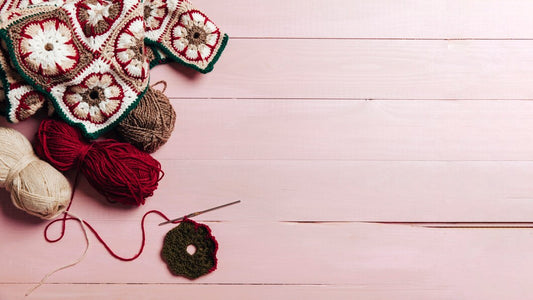
Tips for Choosing the Right Yarn Weight for Your Project
Selecting the appropriate yarn weight is crucial for the success and appearance of your knitting, crocheting, or weaving projects. Understanding yarn weights and their characteristics can help you achieve the desired look and feel in your finished piece. In this article, we'll explore important tips for choosing the right yarn weight for your project.
-
Understand Yarn Weight Categories: Yarns are categorized into standard weight categories ranging from super fine (lace) to super bulky. Familiarize yourself with these categories to determine the thickness and gauge of the yarn.
-
Consider Project Requirements: Different projects require specific yarn weights to achieve the desired outcome. For example:
- Fine yarns (lace, fingering) are suitable for delicate shawls, socks, and intricate lacework.
- Medium-weight yarns (worsted, aran) are versatile and commonly used for sweaters, hats, and blankets.
- Bulky and super bulky yarns are ideal for quick projects like scarves, cowls, and chunky blankets.
-
Check Pattern Recommendations: When following a pattern, the designer usually specifies the recommended yarn weight and gauge. Adhering to these recommendations ensures your project turns out as intended.
-
Gauge Swatching: Always swatch and measure your gauge before starting a project, especially if substituting yarn weights. Adjust needle or hook size as needed to match the pattern's gauge for proper fit and stitch definition.
-
Consider Texture and Drape: Besides weight, consider the texture and drape of the yarn. Smooth, tightly spun yarns are great for stitch definition and structured garments, while fluffy or loosely spun yarns create a softer, drapey fabric.
-
Yarn Fiber Content: The fiber content of yarn also influences its weight and properties. For example, wool yarns tend to be springy and elastic, while cotton yarns offer a crisp, smooth texture. Choose fibers that suit your project's needs in terms of warmth, breathability, and care requirements.
-
Experiment and Have Fun: Don't be afraid to experiment with yarn weights to achieve unique textures and effects in your projects. Mixing yarn weights in colorwork or combining different fibers can add depth and interest to your creations.
Choosing the right yarn weight is essential for ensuring your projects turn out beautifully. By understanding yarn weight categories, considering project requirements, checking pattern recommendations, swatching for gauge, considering texture and fiber content, and embracing experimentation, you'll be better equipped to select the perfect yarn weight for your next crafting endeavor. Happy crafting!







